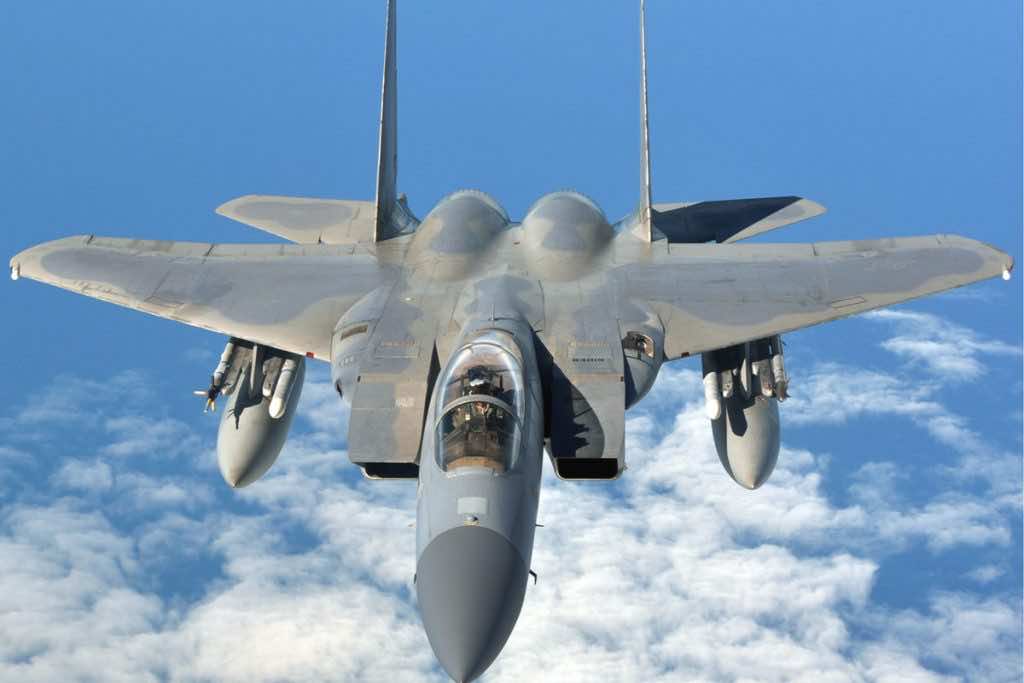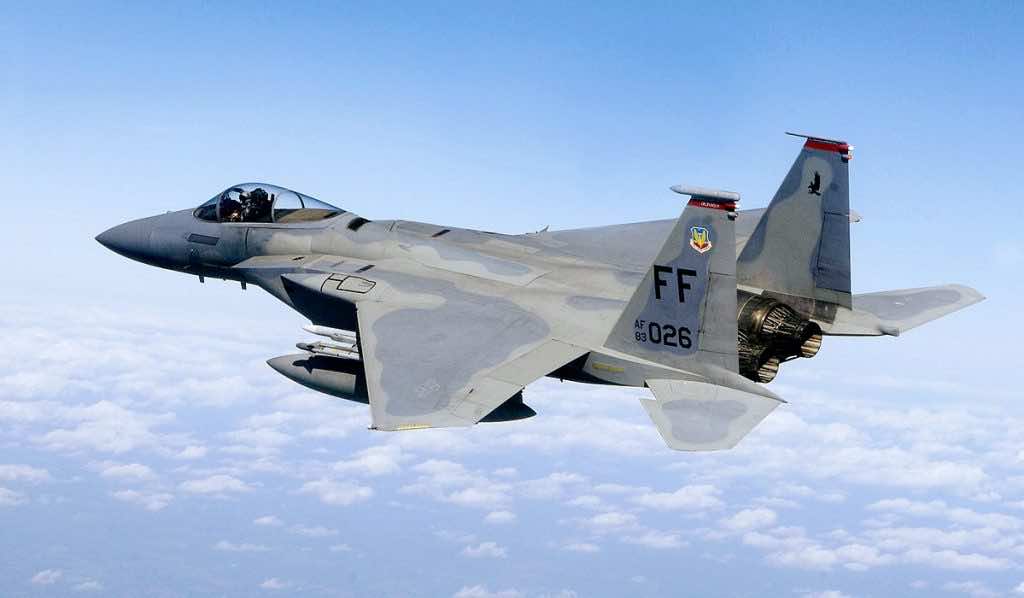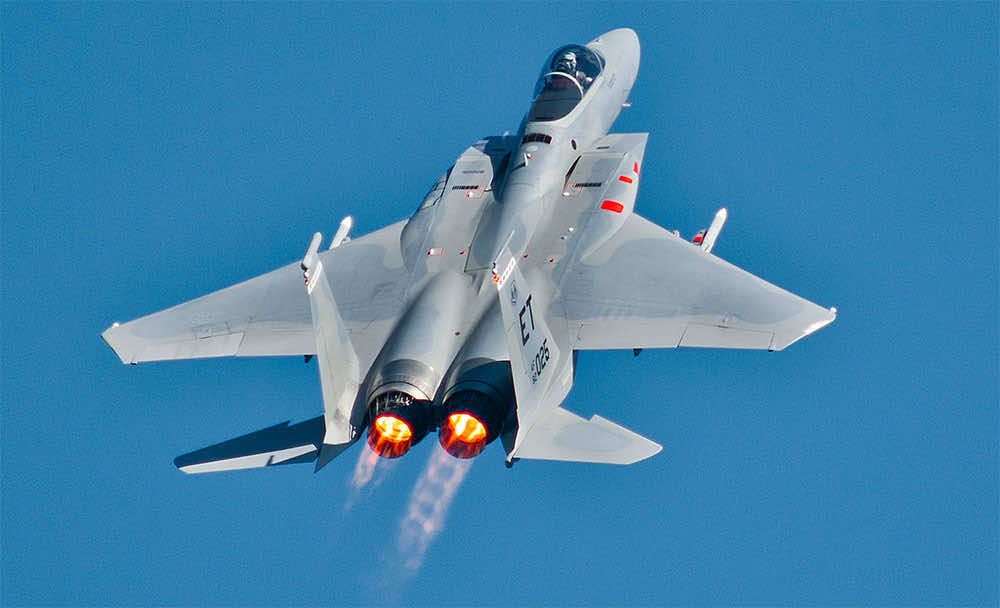The McDonnell Douglas F-15 Eagle is an American twin-engine, all-weather tactical fighter aircraft designed by McDonnell Douglas. Following reviews of proposals, the United States Air Force selected McDonnell Douglas’s design in 1967 to meet the service’s need for a dedicated air superiority fighter. The Eagle first flew in July 1972, and entered service in 1976. It is among the most successful modern fighters, with over 100 victories and no losses in aerial combat.

The F-15 is a high-performance, all-weather air superiority fighter known for its incredible acceleration and maneuverability. With a top speed in excess of Mach 2.5 (more than 1,600 mph or 2575 kph), it was the first U.S. fighter with enough thrust to accelerate vertically. The F-15 carries a large complement of missiles — including AIM-9 Sidewinders and AIM-7 Sparrows; the Boeing-built Small Diameter Bomb I, Joint Direct Attack Munition (JDAM) and Laser JDAM weapons; and an internal 20 mm Gatling gun — all vital for modern engagements.
The Eagle’s air superiority is achieved through a mixture of unprecedented maneuverability and acceleration, range, weapons and avionics. It can penetrate enemy defense and outperform and outfight any current enemy aircraft. The F-15 has electronic systems and weaponry to detect, acquire, track and attack enemy aircraft while operating in friendly or enemy-controlled airspace. The Eagle can be armed with the AIM-7F/M Sparrow orAIM-120 AMRAAM (Advanced Medium Range Air-to-Air Missile) radar guided missiles on its lower fuselage corners, with AIM-9L/M Sidewinder or AIM-120 missiles on two pylons under the wings, and an internal M61 Vulcan 20mm Gatling gun in the right wing root. The weapons and flight control systems are designed so one person can safely and effectively perform air-to-air combat.

F-15Es are equipped with Pratt & Whitney F100-PW-229 low-bypass turbofan engines, which provide 29,000lb of thrust per engine. Using the digital electronic engine control system, the pilot can accelerate from idle power to maximum afterburner within four seconds.



